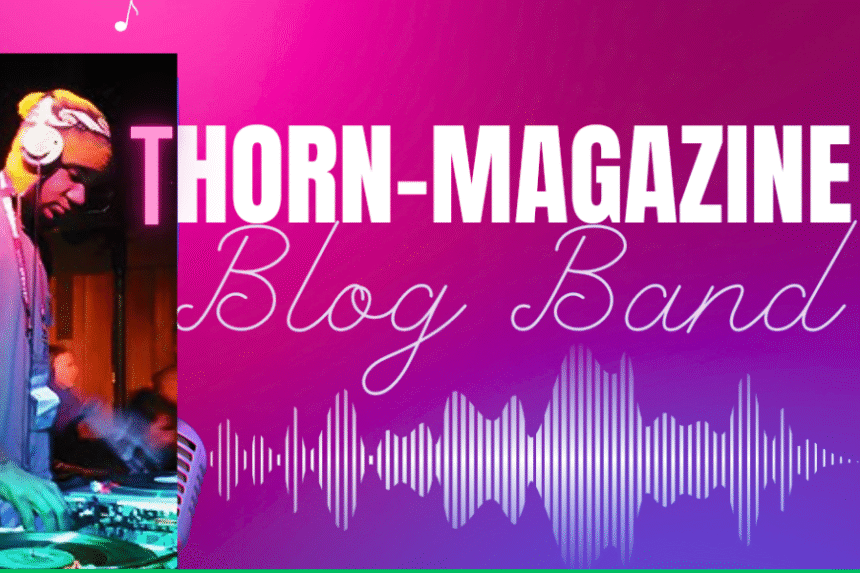
What is the Thorn-Magazine Blog Ban?
The Thorn-Magazine Blog Ban emerges as a significant regulatory measure within the online discourse community, aiming to address various concerns surrounding content dissemination and freedom of expression. This ban, introduced in early 2023, originates from a growing necessity to moderate discussions that have, at times, traversed into harmful or misleading territories within the blogosphere. The increase in misinformation and divisive rhetoric has prompted platforms like Thorn-Magazine to implement stringent measures aimed at fostering a more responsible environment for digital dialogue.
The implications of the Thorn-Magazine Blog Ban reverberate across numerous dimensions of online publishing. At its core, the ban seeks to balance the preservation of free speech with the imperative to curb the proliferation of harmful content. It delineates clear guidelines for what constitutes acceptable discourse, effectively reshaping the boundaries of expression in the blogging realm. Critics argue that such measures may infringe upon individual liberties; nevertheless, proponents contend that the ban is a necessary step towards ensuring a healthier online ecosystem that prioritizes accurate information and respectful debate.
The execution of the ban has significant ramifications for bloggers, influencers, and content creators who rely on platforms such as Thorn-Magazine for their visibility. The regulations necessitate a shift in content strategies, prompting writers to reflect on their narrative styles and approaches. As creators navigate this new landscape, the role of moderators becomes increasingly vital in upholding the standards set forth by the ban. Ultimately, the Thorn-Magazine Blog Ban symbolizes a pivotal change in how online communities engage with content, demanding a profound reevaluation of both individual accountability and collective responsibility in digital interactions.
The Reasons Behind the Ban
The recent Thorn-Magazine Blog Ban has stirred significant discussion among various circles, igniting debate over the implications of online content regulation. Proposed arguments leading to this ban encompass a range of factors, among which controversial content stands out prominently. Thorn-Magazine, known for its provocative articles, often pushed boundaries which some critics argue fostered misinformation or harmful ideologies. This prompted calls for a reevaluation of what constitutes acceptable discourse in our digital landscape.
Another crucial consideration in the decision to implement the Thorn-Magazine Blog Ban relates to potential harm inflicted on readers. Content that is emotionally charged or that deals with sensitive topics could trigger distress or exacerbate mental health issues amongst its audience. With increasing awareness of the impact of online material on individuals, advocates for the ban emphasize the responsibility of content creators to ensure a safe environment for readers. This raises ethical questions regarding the balance between freedom of expression and the duty to protect vulnerable populations.
There exists a spectrum of perspectives surrounding the ban. Supporters argue that regulating thorn-magazine blog content is a necessary step towards prioritizing mental well-being and fostering constructive dialogue. They claim that unchecked discourse risks creating toxic spaces that hinder genuine conversation. On the flip side, opponents contend that the ban stifles creativity and curtails the exchange of diverse viewpoints, thus jeopardizing the very essence of open discourse. This dichotomy illustrates the complexities involved in the Thorn-Magazine Blog Ban, where differing priorities clash, raising essential considerations about the direction of online content governance.

Impact on Bloggers and Readers
The recent Thorn-Magazine Blog Ban has instigated significant shifts in the online landscape for content creators and their audiences. As the blogging community grapples with this ban, numerous implications are becoming evident, beginning with the immediate adjustments that bloggers must make to adapt to new restrictions. Many content creators have begun to explore alternative platforms, reigniting discussions about the sustainability of existing blogging practices. Traditional platforms, once viewed as safe havens for expression, may no longer suffice as bloggers navigate increasing censorship.
Moreover, the engagement between bloggers and their audience is experiencing a noticeable transformation. With the Thorn-Magazine Blog Ban limiting the diversity of available voices, readers may find themselves seeking new sources of information and entertainment. This quest for diverse content is pushing audiences toward unified platforms that provide a broader array of perspectives, potentially diminishing the influence of once-popular blogging sites. In essence, as content creators search for alternative avenues to express their ideas, audience engagement will likely fragment, paving the way for innovative forms of interaction.
The long-term effects of the ban also merit consideration. For bloggers affected by the Thorn-Magazine Blog Ban, the challenge lies not only in finding new audiences but also in the potential dilution of creative expression due to the fear of further repercussions. As bloggers are forced to reconsider their voices and messages, a significant evolution in content production is likely to occur. On the reader’s side, this uncertainty may lead to a collective reevaluation of what constitutes valuable content, prompting deeper discussions about the essence of online discourse.
Overall, the Thorn-Magazine Blog Ban has catalyzed a transformative period for both bloggers and their audiences, encouraging them to rethink the platforms they engage with and the nature of the content they consume. As the community adapts to these changes, the future dynamics of blogging remain a topic of significant interest.
Future Implications and Conclusion
The ban of the Thorn-Magazine blog has sparked significant debate regarding the future of online discourse, highlighting potential shifts in blogging culture and the dynamics of digital expression. As institutions and platforms reassess their policies in light of this incident, we may witness the emergence of new blogging platforms that champion freedom of expression and prioritize user autonomy. These platforms will aim to address the growing concerns surrounding censorship and its impact on creative expression within the digital landscape.
Moreover, the Thorn-Magazine blog ban may catalyze a movement among independent writers and content creators to establish decentralized blogging networks. Such networks would allow individuals to share their voices without the constraints imposed by traditional platforms, thereby democratizing information dissemination. As a result, we could see a resurgence in niches that value diverse opinions and underline the critical nature of open dialogue in modern society.
As blogging culture evolves, so too will the discourse surrounding censorship. The recent events surrounding the Thorn-Magazine blog underscore the importance of balancing community standards with individual expression. It is essential for both users and creators to engage in conversations about the ethical implications of content moderation. Ongoing discussions will likely encourage stakeholders to consider how to foster an inclusive environment while upholding the right to free speech.
In conclusion, the implications of the Thorn-Magazine blog ban extend far beyond its immediate context, serving as a pivotal moment in the continuous evolution of online platforms. As we witness shifts in blogging norms and the formation of new spaces for expression, it is crucial to remain vigilant about the delicate balance between freedom and responsibility in our digital interactions. The future of online discourse holds significant promise, contingent on our ability to foster dialogue that privileges both diversity and respect. As this landscape transforms, communities will need to navigate these changes thoughtfully, ensuring that freedom of expression remains a cornerstone of digital engagement.



